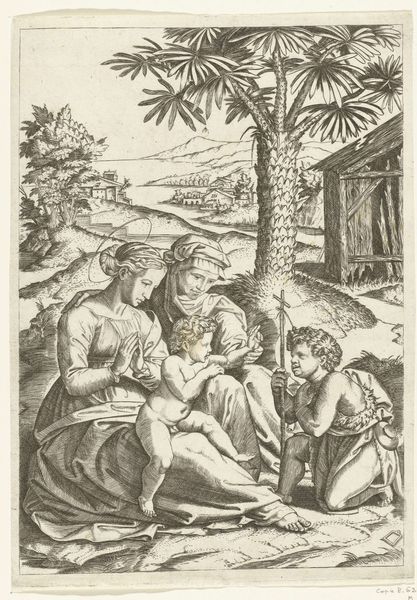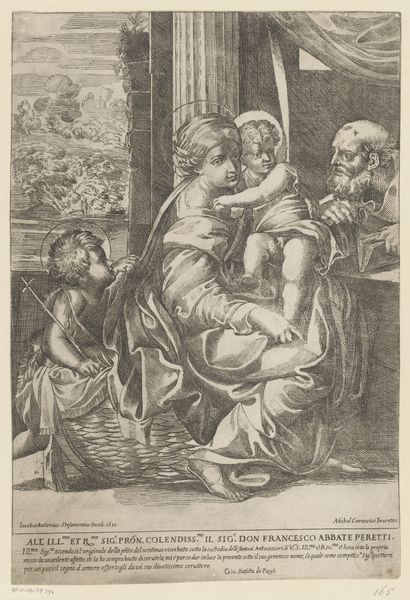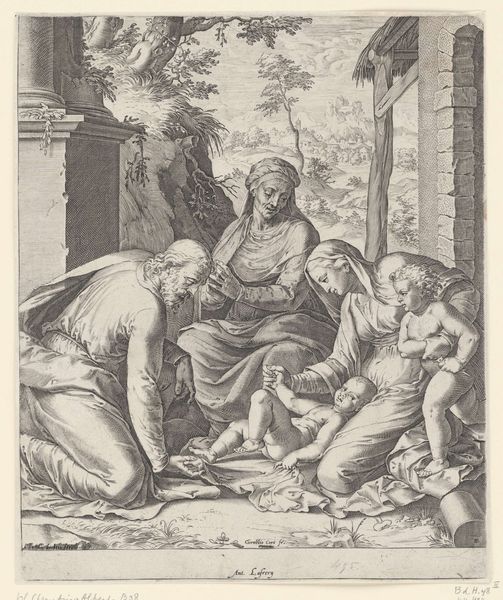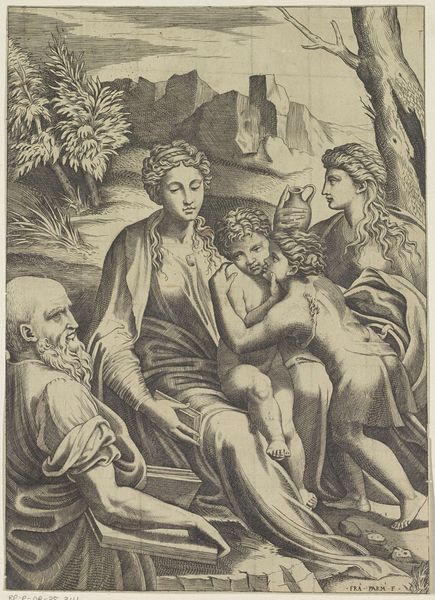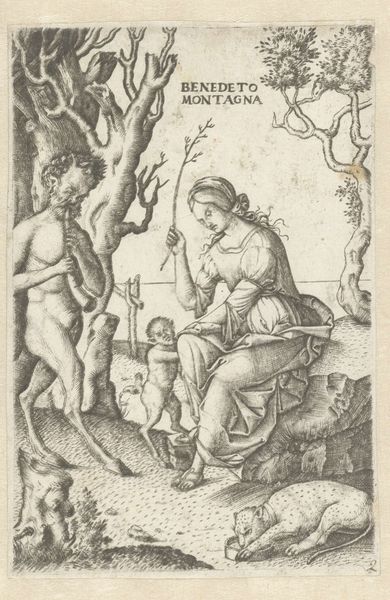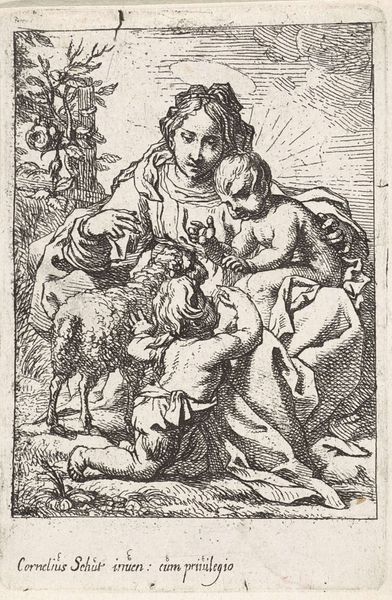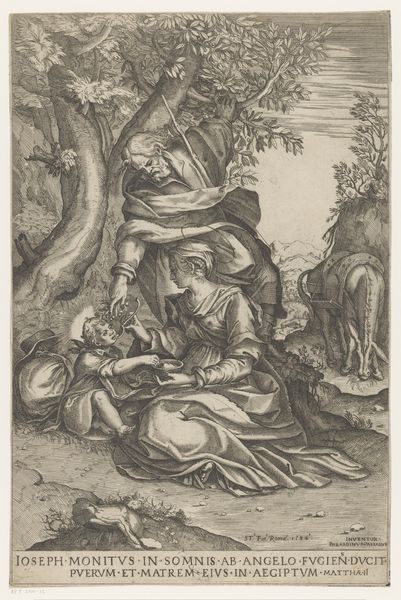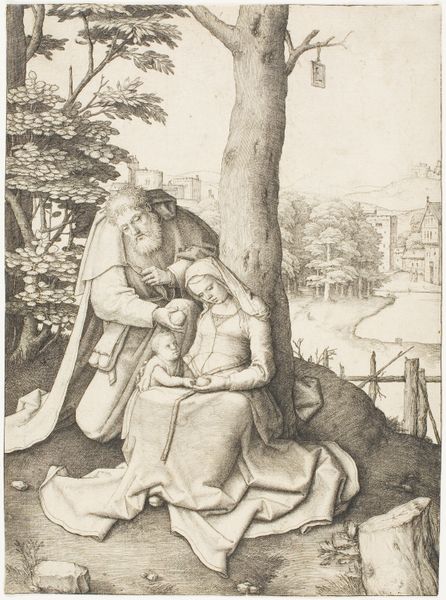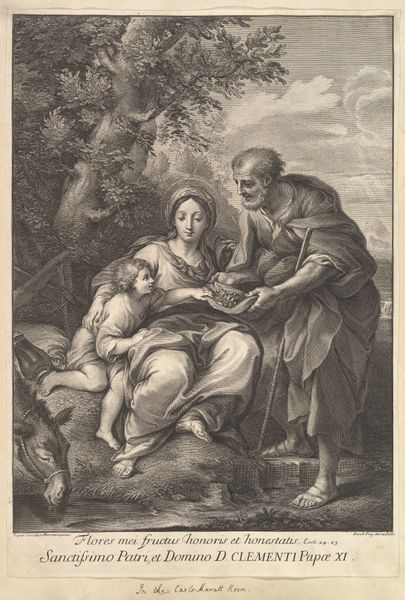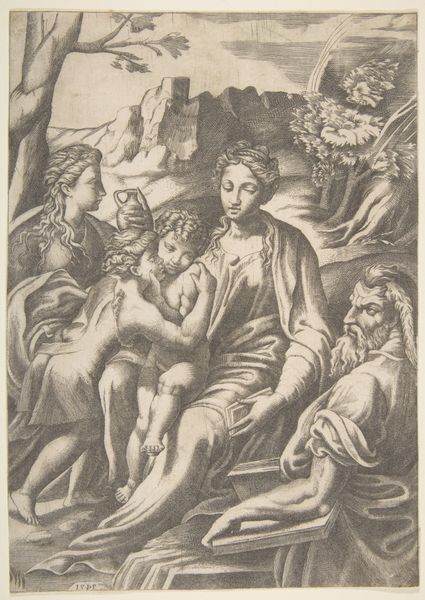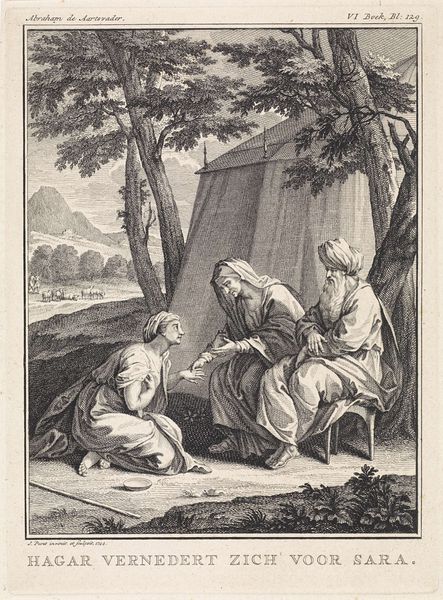
The Virgin and Child with St. Elizabeth and John the Baptist, called 'The Virgin of the Palm Tree' 1500 - 1534
0:00
0:00
drawing, tempera, print, engraving
#
tree
#
drawing
#
tempera
# print
#
landscape
#
figuration
#
form
#
madonna
#
child
#
history-painting
#
italian-renaissance
#
engraving
Dimensions: 9 3/4 x 6 3/4 in. (24.7 x 17.1 cm)
Copyright: Public Domain
Editor: This engraving, "The Virgin and Child with St. Elizabeth and John the Baptist," sometimes called "The Virgin of the Palm Tree," attributed to Marcantonio Raimondi, dates sometime between 1500 and 1534. The fine lines create a very peaceful, idyllic mood. What do you see in this piece, particularly regarding its composition? Curator: I find the formal arrangement quite compelling. Observe how the figures are meticulously positioned, creating a pyramidal structure that directs the viewer’s eye. Consider how the palm tree in the background functions not just as a setting element, but as a visual anchor, balancing the composition. Note also the texture and detailing in the landscaping which contrasts beautifully with the smoothed-over subjects in the foreground. How do you think that this contrast might have been accomplished, materially speaking? Editor: Perhaps through different techniques in the engraving process itself? Like, varying the pressure to create those darker, more textured areas? Curator: Precisely. And consider the use of light and shadow. The artist employs hatching and cross-hatching to define forms and create a sense of depth, manipulating the viewer’s perception of space and volume. There's an almost mathematical precision to the rendering of folds in the drapery. Editor: It's true; each line seems purposeful. What strikes me is the idealized form of the Madonna juxtaposed with the more realistic rendering of the children. Curator: An interesting point. The contrast in rendering is subtle, yet noticeable. This highlights a formal dissonance within the piece and asks what stylistic intention might lie there, within that representational gap. We also see, I think, a symbolic dissonance too, in the landscape. Do you see that? Editor: I do. Thinking about form alone gives so much to unpack in this piece. It's been very insightful. Curator: Indeed. By analyzing its formal elements, we gain a deeper appreciation for the artist's skill and intention, even if definitive meaning remains elusive.
Comments
No comments
Be the first to comment and join the conversation on the ultimate creative platform.
